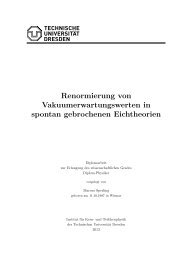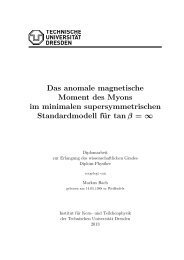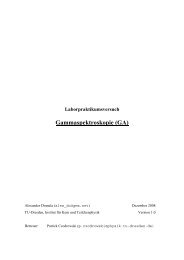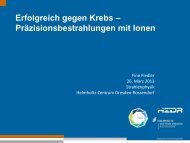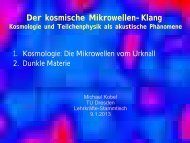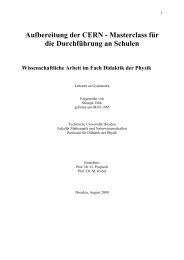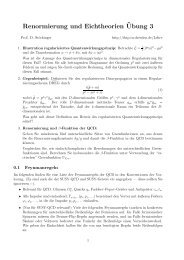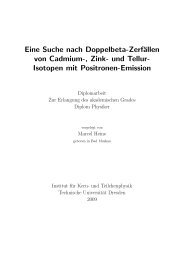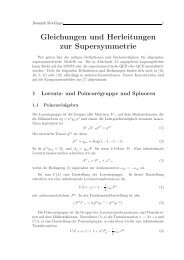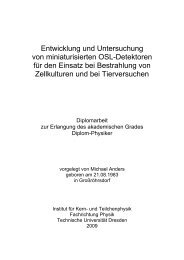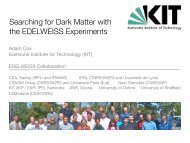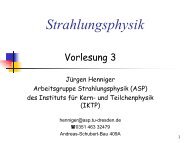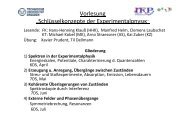a design study for a cobra upgrade to - Institut für Kern- und ...
a design study for a cobra upgrade to - Institut für Kern- und ...
a design study for a cobra upgrade to - Institut für Kern- und ...
Create successful ePaper yourself
Turn your PDF publications into a flip-book with our unique Google optimized e-Paper software.
22 4 Scintillation detec<strong>to</strong>rs<br />
search (DAMA - NaI), neutrinoless double beta decay and neutrino detection<br />
experiments (SNO+ - LAB). They are also used in commercial<br />
fields like medical imaging applications (PET scanner - BGO), container<br />
and baggage scanning, industrial gauging and many more.<br />
This chapter will explain in 4.1—“Scintilla<strong>to</strong>r crystals” the main characteristics<br />
of the scintillation process and will give an overview of the<br />
conventional scintilla<strong>to</strong>r materials. In 4.2—“Detec<strong>to</strong>r assembly” the<br />
electronic readout devices and aspects of the detec<strong>to</strong>r mounting are discussed.<br />
4.1 Scintilla<strong>to</strong>r crystals<br />
The basic part of a scintillation detec<strong>to</strong>r is the scintillating material,<br />
emitting the scintillation light. The process, which leads <strong>to</strong> the emission<br />
of the scintillation light, starts with ionizing radiation, penetrating<br />
a scintillating material. Section 4.1.1—“Interaction of ionizing radiation<br />
with matter” there<strong>for</strong>e discusses how incident radiation gets<br />
absorbed or attenuated in the scintilla<strong>to</strong>r and deposits energy. The<br />
conversion of this energy in<strong>to</strong> luminescence emission is explained in<br />
4.1.2—“Scintillation process”. Afterwards an overview of commercial<br />
scintilla<strong>to</strong>rs is given in section 4.1.3—“Scintillating materials”.<br />
4.1.1 Interaction of ionizing radiation with matter<br />
For categorization of its interaction with matter, ionizing radiation can<br />
be divided in<strong>to</strong> direct and indirect ionizing radiation. Direct ionizing<br />
radiation are charged particles. It is convenient <strong>to</strong> treat particles (like<br />
α, p and µ) and electrons and positrons separately. Indirect ionizing<br />
radiation are electromagnetic radiation and neutrons. The sources of<br />
ionizing radiation were discussed in chapter 3—“The COBRA experiment”.<br />
CHARGED PARTICLES like α, p, µ interact mainly through the coulomb<br />
interaction with the a<strong>to</strong>mic electrons. The energy loss through elastic<br />
scattering with the nuclei is possible, but of minor importance. The<br />
collisions with the constituent electrons are inelastic, and momentum<br />
and energy are transferred, raising the interacting electron <strong>to</strong> a higher<br />
lying shell (excitation) or remove it completely from the a<strong>to</strong>m (ioni-



